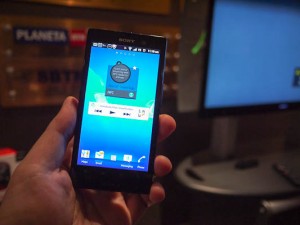
Text and photos by Gadjo Cardenas Sevilla
Unlike most smartphone makers, Sony is betting big on smart accessories to accompany its Xperia line of Android smartphones.
Sony launched its Xperia Ion smartphone last week. The device is the first 4G LTE Android smartphone for Sony and will be available on Rogers for $49.99 on a three year plan. The Xperia Ion boasts a number of key features including a 1.5 Ghz dual core processor, a sweet multi-touch4.6″ 1080p HD Reality Display powered by Mobile BRAVIA Engine and a 12 Megapixel camera that shoots HD video at 1080p resolution. This Sony smartphone runs the Android 3.2 version of Google’s mobile OS codenamed Gingerbread.

As amazing as the Xperia Ion is as a standalone device and multimedia savvy smartphone, Sony has gone the extra mile to surround it with equally compelling accessories that are designed to really extend the functionality of the Xperia Ion.
Sony is selling a$150 SmartWatch, which connects to Android smartphones via Bluetooth and serves as a secondary screen, alert dock and remote control. Users can receive updates on email, Facebook updates, SMS and calls and even navigate their music playlists and use the watch as a remote trigger for the smartphone camera.
The SmartWatch can also download various widgets and serve to deliver up-to the minute weather reports and even news. Best thing about this device is that any developer can integrate their app with this in mind.
Aside from the SmartWatch, Sony is providing some use for the (NFC) Near Field Communication chips in the Xperia smartphones. They are selling optional SmartTags, which are programmable plastic discs that trigger settings and even applications. These SmartTags aren’t just a clever way to get people into the habit of understanding how NFC works, they serve a practical purpose.
It is great to see Sony embracing a potential future standard for a change and not developing their own proprietary solution. NFC is expected to be a universal feature on modern smartphones.
 A SmartTag for home can be programmed to turn off the smartphone Bluetooth and LTE radios so it saves battery and data costs while turning on the WiFi radio so it can connect to the home network.
A SmartTag for home can be programmed to turn off the smartphone Bluetooth and LTE radios so it saves battery and data costs while turning on the WiFi radio so it can connect to the home network.
A SmartTag for the car can turn on navigation, perhaps it can mute the ringer for incoming calls so drivers do not get distracted and it can be made to enable the audio playback capabilities.
These SmartTags really offer users a starting point to learn about NFC and integrate functionality into their surroundings. Making the technology routine enough for adoption once it is established as a cashless payment system



